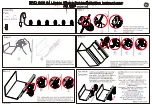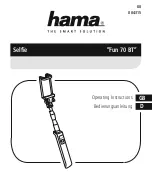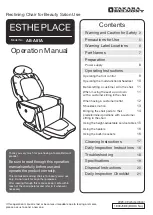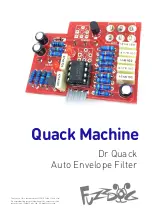
6
2 For your safety
PLICSMOBILE T81/B81/S81 • External GSM/GPRS/UMTS radio unit
55234-EN-170206
2.6 EU conformity
The device fulfils the legal requirements of the applicable EU guide-
lines. By affixing the CE marking, we confirm successful testing of the
product.
You can find the EU conformity declaration on our website under
www.vega.com/downloads.
2.7 Radio license for Europe
The instrument was tested according to the latest issues of the har-
monized standards:
•
EN 300328
•
EN 301511
•
EN 301908-1
•
EN 301908-2
•
EN 300440
It is hence approved for use inside closed vessels in countries of the
EU and EFTA.
2.8 Radio license for USA
This approval is only valid for USA. Hence the following text is only
available in the English language:
This device complies with Part 15 of the FCC Rules. Operation is
subject to the following two conditions:
•
This device may not cause interference, and
•
This device must accept any interference, including interference
that may cause undesired operation of the device
Changes or modifications not expressly approved by the manufac-
turer could void the user’s authority to operate this equipment.
This device is approved for unrestricted use only inside closed, sta-
tionary vessels made of metal, reinforced fiberglass or concrete.
This equipment complies with FCC radiation exposure limits set forth
for an uncontrolled environment. This equipment should be installed
and operated with minimum distance of 20 cm cm between the radia-
tor and your body. This transmitter must not be co-located or operat-
ing in conjunction with any other antenna or transmitter.
This equipment has been tested and found to comply with the limits
for a Class B digital device, pursuant to Part 15 of the FCC Rules.
These limits are designed to provide reasonable protection against
harmful interference in a residential installation. This equipment
generates, uses and can radiate radio frequency energy and, if not
installed and used in accordance with the instructions, may cause
harmful interference to radio communications. However, there is no
guarantee that interference will not occur in a particular installation. If
this equipment does cause harmful interference to radio or television
reception, which can be determined by turning the equipment off and
on, the user is encouraged to try to correct the interference by one or
more of the following measures:
•
Reorient or relocate the receiving antenna







































